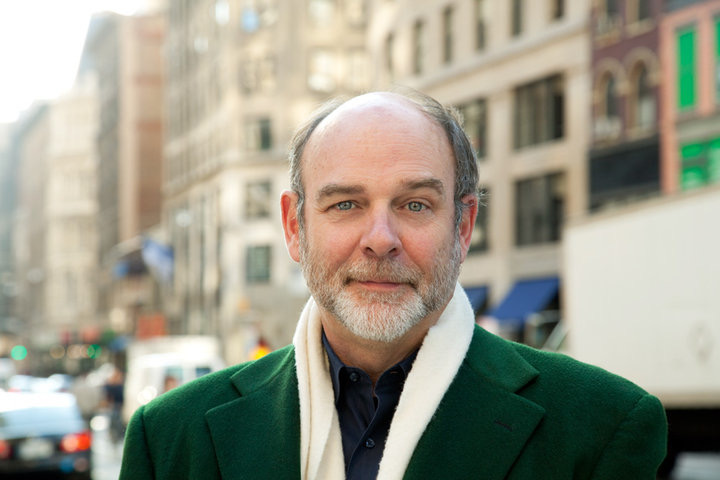Specialty food retailers and manufacturers can drive sales gains though a better understanding of the nuances around consumers’ food-shopping behaviors in today’s environment, said Paco Underhill, founder of consulting firm Envirosell Inc.
Underhill, author of the classic business book Why We Buy: The Science of Shopping, will give the keynote presentation at the Winter Fancy Food Show this Monday, January 16 at 9 a.m. His talk follows the release of his latest book, How We Eat: The Brave New World of Food and Drink, which describes many of the forces shaping modern food shopping, from supermarket layouts to social media influencers.
SFA thanks the sponsor of this session, Zipline Logistics.
He recently spoke with SFA News Daily about his plans for the keynote presentation.
“Part of what I'm going to talk about is what were the things that were going on in the broader food industry before the pandemic, and what are six things that we are seeing going on right now that are important for us to look at,” Underhill said.
Incorporating examples and visual aids from his travels around the world, Underhill will draw on his decades of experience helping retailers, restaurants, and brands understand shopper behavior, he said.
The six key forces impacting food-shopping behavior that Underhill plans to discuss are:
• The blurring of the boundaries between the physical and digital worlds.
Mobile phones have become an integral part of consumers’ lives, and should be considered platforms where retailers and brands can provide education and community, Underhill said.
“If you walk in to virtually any food store, or any QSR [quick-service restaurant], a healthy percentage of people have their phones in their hands,” he said.
In order to optimize this opportunity, food merchants need to consider how consumers process the information they see on their mobile devices, Underhill explained.
“One of the things that has fundamentally changed is that the connection between our eyes and our brains has been affected by our exposure to screens,” he said.
• The evolving status of women in society.
As women have taken on increasing responsibilities as household breadwinners, as well caregivers, shoppers, meal planners and other roles, the way retailers and brands market to women must also change, Underhill said.
“While historically we sold her food, apparel and beauty, today we sell her everything,” he said. “Understanding what is female-friendly is really important.”
Underhill cited retail parking lots as an example, noting that while men rarely associate parking lots with negative experiences, the same does not hold true for women. That is why Underhill often begins conducting retail store audits and clinics from the vantage of the parking lot.
• Life stages govern how people consume.
Underhill notes that by the time people reach age 40, they tend to have settled into a routine, in which around 80% of the foods they buy are exactly the same, week after week.
“As a consumer, why do I have to keep going back to buy the things that are designed to scream at me from the shelf, when for many of us, they don't need to scream?” he said.
In his book, he describes what he calls the “boomerang aisles” of the center store departments, where shoppers walk just far enough to grab the item they need, then turn around and leave.
“We’re here to replace, not to explore,” he writes. “Once in a while, an item will drop out of our steady rotation, or we’ll fall in love with something new. But for the most part, we’re robo-shoppers here.”
• The impact of time on consumer behavior.
Retail stores have historically been designed to keep shoppers in the store as long as possible in order to drive more impulse sales and bigger baskets, Underhill said, and that approach has not changed much since the first self-service grocery stores opened in the early 20th century.
In the meantime, the time pressures on shoppers have increased, and more consumers are seeking to get in and out of the store quickly, a trend that has been exacerbated by the pandemic.
“One of the questions that we have … is how can we take that time pressured customer and get them out the door faster?” said Underhill. “It doesn't mean that we're selling them less—we're just selling them better.”
• The meanings of “local” and “global.”
Retailers also need to consider how they think about what “local” means for their individual stores and the customers who shop them, Underhill said
Understanding that local Muslim shoppers might decide which store to shop based on its halal meat offerings, for example, can make a big difference, he said.
In addition, eating food sourced locally has become increasingly associated with support of local producers, and with reducing the impact on the environment.
• Wealth and ethnicity.
For the past couple of decades, more wealth has shifted into the hands of people who have earned it in their lifetimes, Underhill said, and away from a historically Caucasian aristocracy.
This has resulted in a more diverse culinary landscape, where consumers now shop “across a broader spectrum of the food chain and the taste chain,” he said.
“Part of my goal in talking to your group is to hopefully make sure that everybody is going to see the world in which they shop and consume a little differently than when they started,” said Underhill.
He noted that the paperback edition of his latest book is scheduled to become available in early January, and he pledged to sign any copies purchased at the Fancy Food Show.
Related: Winter Fancy Food Show Edition of Specialty Food Available; sofi Application Process Begins March 1.

